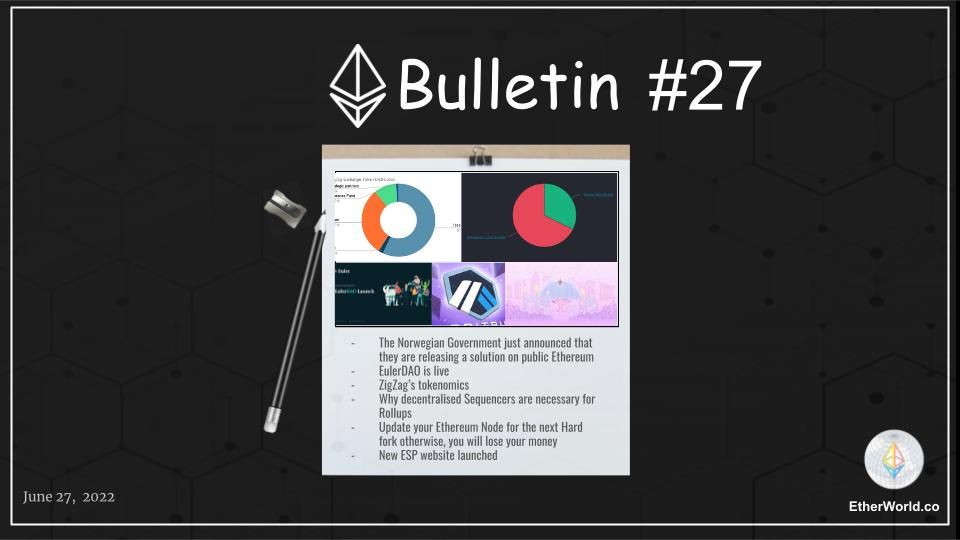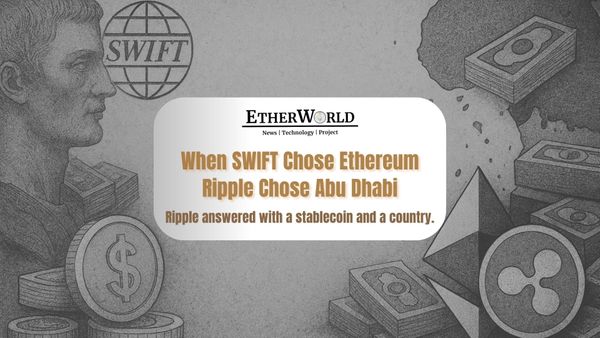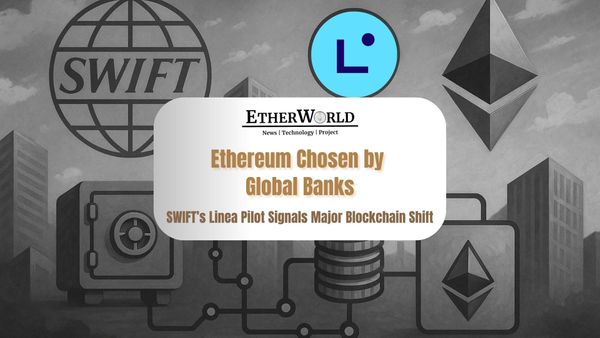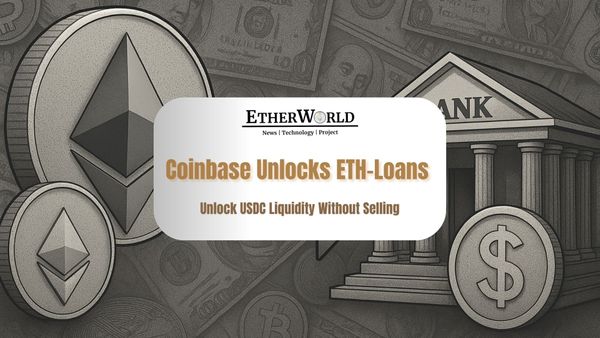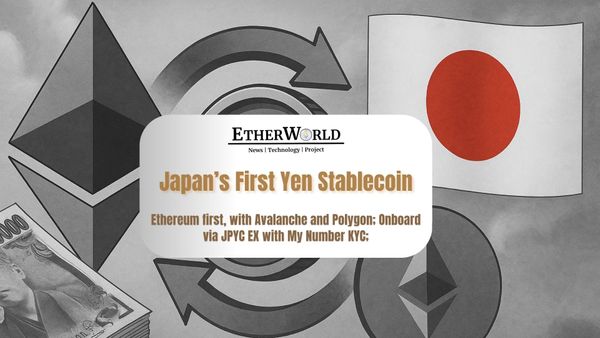TL;DR
- The Norwegian Government just announced that they are releasing a solution on public Ethereum
- EulerDAO is live
- ZigZag's tokenomics
- Why decentralised Sequencers are necessary for Rollups
- Update your Ethereum Node for the next Hard fork otherwise, you will lose your money
- New ESP website launched
The Norwegian Government just announced that they are releasing a solution on public Ethereum
The Norwegian government revealed that they will be using Arbitrum to launch a platform for cap tables for unlisted companies. While maintaining the complete security extended from the Ethereum main chain, Arbitrum is faster and less expensive to transact with. Ethereum's scaling method are the Layer 2 scaling solutions. An SDK is available to help web 2.0 and legacy backend developers comprehend and utilise the platform. It was created by Symfoni. As a result, the platform's functionality can be expanded and data can be retrieved by both public and private sector organisations. The shares are represented by the ERC1400 standard. This standard, which combines ERC20 and ERC721, satisfies the requirements for securities. The platform's foundation is Consensys' ERC1400 implementation.
Earlier today the Norwegian government announced they're using Arbitrum to release a cap tables platform for unlisted companies.
— Arbitrum (@arbitrum) June 24, 2022
We're very excited to see that Arbitrum is enabling the world to leverage the security of Ethereum! ? https://t.co/WBA3nlzzUt
EulerDAO is live
A non-custodial Ethereum protocol called Euler enables users to lend and borrow nearly any cryptocurrency asset. They have made an announcement of EulerDAO's release. Community members can choose a delegate on the delegates website and take part in the future of decentralised finance by claiming any EUL tokens that are still accessible from earlier epochs and voting on their behalf as EUL holders. Owners of EUL tokens will soon be able to stake their tokens against the markets they desire to get an EUL dividend in upcoming epochs after Epoch 7 goes online. The staked amounts determine the amount that is allocated.
See the thread below for more information.
EulerDAO is live!
— Euler Finance (@eulerfinance) June 23, 2022
Starting today, community members can claim any available EUL tokens from previous epochs, select a delegate on the delegates page and participate in the future of decentralised finance.
Read more below on claiming and delegating. pic.twitter.com/p4xIdJcD63
ZigZag's tokenomics
An ERC-20 governance token for the multi-chain ecosystem of ZigZag Exchange is called ZigZag (ZZ). They did not impose any fees on their protocol prior to the introduction of their token. They didn't have enough money to disperse because zkSync's network was the only fee traders would pay, which was roughly $0.10 per swap. As a result, they have been tirelessly striving to expand ZigZag Exchange beyond zkSync to another chain. They will be able to introduce everlasting futures in an order book model at the time of this expansion, in addition to their current spot trading. At this point, they intend to start charging fees, with the proceeds going to the Treasury. As a result, they disclosed information about IDO and tokenomics.
Our token is going public today! Tokenomics and IDO details are explained here.https://t.co/t6lKu6AlYg
— ZigZag Exchange (@ZigZagExchange) June 24, 2022
Why decentralised Sequencers are necessary for Rollups
Although Layer 2 blockchains inherit security from Layer 1 blockchains, this does not preclude the possibility of exploiting them if their smart contracts have vulnerabilities. According to Bartek, security is more than just being secure; it also needs to liveliness which cannot reasonably come from the centralised sequencers in rollups. Here is a discussion where he provides a thorough justification.
By now you must have heard that Rollups derive their security from Ethereum. Even Rollups that have a centralised Sequencer. So why would you want to decentralise Sequencers ? Surely it adds complexity and can slow down the L2 block production ? ??
— bartek.eth (@bkiepuszewski) June 25, 2022
Update your Ethereum Node for the next Hard fork otherwise, you will lose your money
The Gray Glacier Upgrade hardfork, which will unleash a difficulty bomb on Ethereum's PoW chain, will take place on June 29th on Block #15050000 in the Ethereum mainnet. Before the chain forks, it is crucial for every staker and validator to update their Ethereum nodes to avoid losing money.
To know more about the upgrade refer to this article.
New ESP website launched
The Ethereum Foundation's Ecosystem Support Program is its public-facing funding division. Their primary responsibilities include allocating funds to important initiatives, serving as an influential voice within the Ethereum ecosystem, and representing Ethereum in public. In total, 136 projects have received $26.9 million from them in 2021. The UI of their website has been updated and is looking very cool.
Adding to the list of cool things happening in 2022 - the brand new ESP site: https://t.co/YiCcXnoMOA
— EF Ecosystem Support Program (@EF_ESP) February 23, 2022
⌛️ office hours
? more grants
Read more
Read more about Ethereum in previous Bulletins -Ethereum Bulletin
Related articles
Disclaimer: The information contained on this web page is for education purposes only. Readers are suggested to conduct their own research, review, analyze and verify the content before relying on them.
To publish press releases, project updates and guest posts with us, please email at contact@etherworld.co.
Subscribe to EtherWorld YouTube channel for ELI5 content.
Support us at Gitcoin
You've something to share with the blockchain community, join us on Discord!


